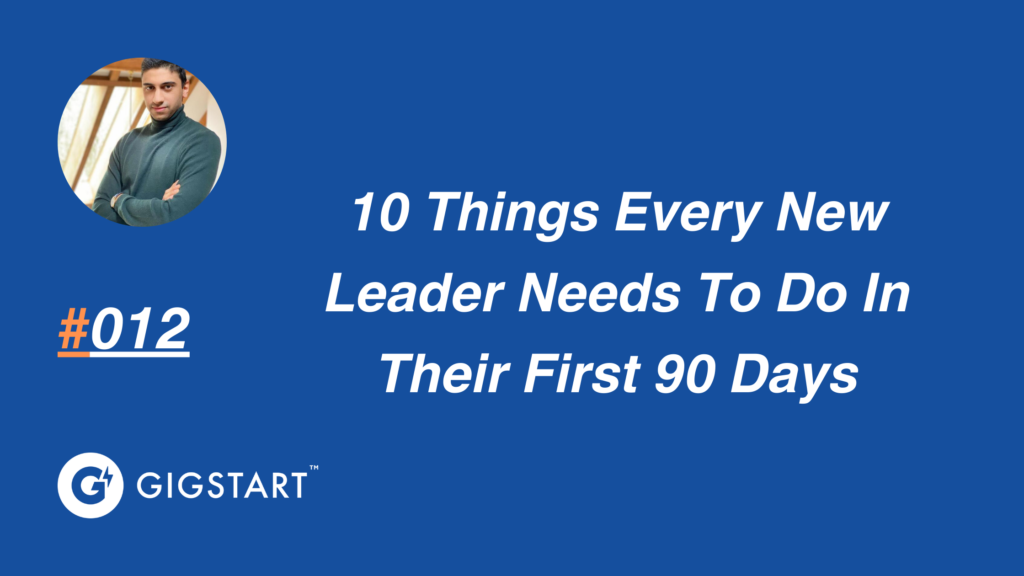10 Things Every New Leader Needs To Do In Their First 90 Days.

Joining a new organisation as a leader can be a daunting task. Whether you’re a VP of Engineering or a Sales Director, in order to achieve your targets you will need an actionable plan spanning your first Quarter (or 90 days at an organisation).
So here are 10 things you need to do in your first 90 days as a leader:
1. Introductions to key stakeholders and direct reports :
Prioritise meeting key stakeholders to understand the ins and outs of the organisation. Is it a flat corporate structure? How are decisions made? Try to meet and have conversations with leaders of different departments, including tech leaders, commercial leaders, engineering leaders etc to have an understanding of their different roles in the company. Many times, especially in smaller organisations, you will have to rely on one another.
Of course, it is also important to meet your direct reports; take time to find out exactly what their roles are, their career ambitions and how you can support them in their development, whether through training or otherwise. Your team’s performance will be the biggest indicator of your success as a leader.
2. Establishment of objectives, targets, for 3, 6 , 12 months :
Set measurable objectives and roadmaps for the first 3, 6 and 12 months for your organisation. Having an understanding of both short and long term targets will give you a clear strategic vision for the future of the function you are leading.
3. Audit past performance (people, process and technology) :
This should be one of the first tasks you undertake following the two above points. Ensure you conduct a comprehensive audit of past and current performance to identify any weaknesses to improve upon or any opportunities that can be exploited. Why were you hired? Was it was due to growth, a backfill or poor performance? These questions can provide further insight into past performance.
The existing processes would not have been perfect and one of the best ways you can make an immediate impact is by finding out what was done well/badly and finding ways to improve.
4. Research the business thoroughly; don’t just rely on onboarding training:
Completing onboarding training is necessary, but it is also standard for any new position, so that alone is not enough. If you can acquire a deep understanding of the business, you will be able to make informed decisions, contribute effectively and fully integrate into the organisation. Find out: How does the company make money? Who are their biggest customers? What is the culture like?
5. Establish reporting framework with management and direct reports:
Depending on who you are reporting into, it is important to establish early on what your performance metrics will be. Make sure to thoroughly discuss this with your manager, so there are no doubts.
Do the same for your direct reports; when you are inheriting a team, make it clear to them what their KPIs are and set up quarterly meetings to ensure they stay on track towards their targets.
6. Map and identify areas for process improvement :
Similarly to point 3, once you have assessed past performance, it is time to look forward. Which channels require improvement? Where are there inefficiencies? Move your time and attention to those points.
7. Based on previous analysis, implement small changes to your people, process and tech stack to generate early wins :
Following on from point 6, make small but impactful tweaks to boost morale and demonstrate your competency. Start with any quick wins; early impact is good impact when it comes to a new leader.
8. Select and implement third party partners/vendors:
Following on from the quick wins, start to make longer term decisions when it comes to people, process and technology. Assess your current providers and conduct market research; is there a better option, whether in terms of price or efficiency, to achieve or improve on what you are currently achieving?
Choosing the right partners and vendors is essential to the business’s long term success.
9. Develop your yearly budgets and get sign off :
Based on all of the above points, come up with a comprehensive plan for the next 3, 6 and 12 months and translate that into an annual budget proposal. In this turbulent market, the CFO is often one of the most important people in an organisation, therefore, when developing your budget you have to constantly be asking yourself: What is the ROI on this investment? Whether it’s recruiting, investing in new technology, opening up in new markets always think about return on investment and clearly articulate this (ideally using numbers not words) for your budget.
10. Execute, monitor, adjust :
Once you get started on implementing your 90, 180 and then 360 day plan, keep monitoring its progress throughout. It likely won’t be perfect and the plan does not have to 100% follow what you initially envisaged.
The key is to have certain time points where you look back on performance and adjust accordingly. For this, quarterly would be the best target, but depending on your organisation and the speed at which things are changing, it could be more frequently than that.
For more information on how to get started in your first 90 days as a new leader, download our free First 90 Days Tool below!


